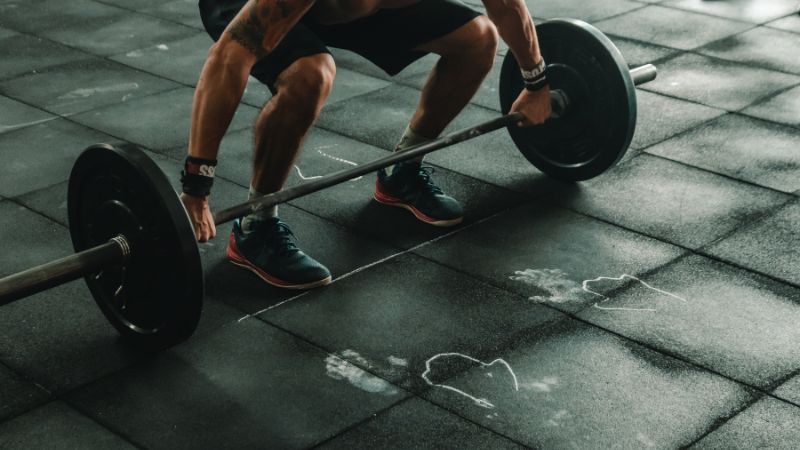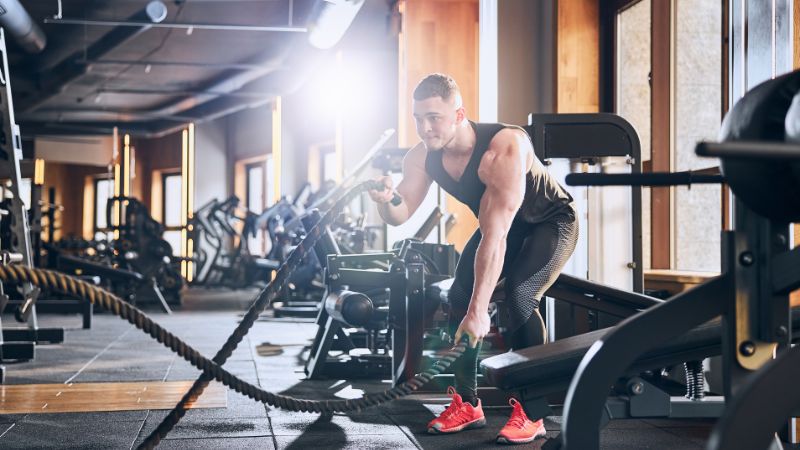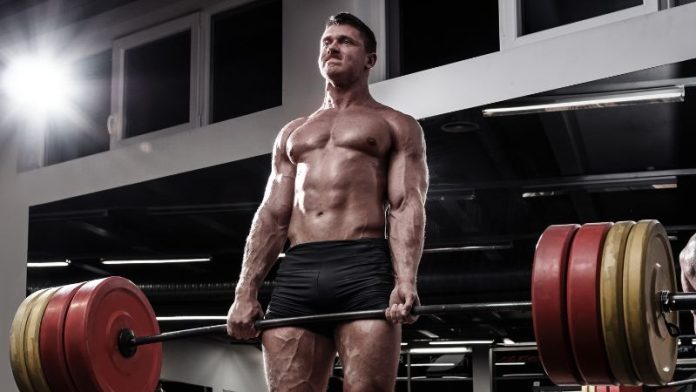If you’re looking to build muscle and increase strength, it’s essential to maintain healthy testosterone levels. Testosterone is a hormone responsible for regulating muscle mass, bone density, and libido in men. However, as we age, our testosterone levels tend to decline, making it more challenging to achieve our fitness goals.
While there are various supplements and medications that can help boost testosterone levels, incorporating testosterone-boosting exercises into your workout routine is an effective and natural way to promote healthy hormone levels.
In this blog post, we’ll discuss the top exercises that you can do to naturally boost your testosterone levels and maximize your muscle gains. We’ll cover a range of exercises, including weightlifting, cardio, and bodyweight movements, that can help you build muscle and improve your overall fitness.
We’ll also provide tips on how to incorporate these exercises into your existing workout routine, along with some essential diet and lifestyle considerations to support healthy testosterone levels.
Whether you’re a seasoned athlete or just starting on your fitness journey, this blog post will provide valuable insights into how you can naturally increase testosterone levels and achieve your fitness goals. By the end of this post, you’ll have a better understanding of the best exercises to boost your testosterone levels and optimize your muscle gains.
Types Of Exercise That Improve Testosterone Gain
Physical activity stimulates testosterone production and releases to help your muscles and heart contend with the task’s demands. All types of exercise—both endurance and strength-training workouts—give you a temporary testosterone boost. But for significant, enduring results—short, high-intensity efforts such as high-intensity interval training and heavy weightlifting work best.

Resistance Exercises
Resistance exercises or weight lifting involves lifting heavy weights to build muscle strength, size, and endurance. There are many forms of resistance training, including free weights, weight machines, resistance bands, and body weight training.
Resistance exercises offer endless physical and mental health benefits, including:
- Improved muscle strength, size, tone, and endurance—to optimize physical performance, improve your appearance, and stabilize your joints;
- Improved weight management—the more muscle you have, the more calories you burn, and the easier it becomes to eliminate unwanted fat;
- Improved balance, mobility, posture, and resistance to injury risks;
- Increased self-esteem and motivation;
- Reduced fatigue and better sleep.
Muscle mass is positively correlated with testosterone levels. Thus, the increased muscle mass provided by resistance exercise increases long-term testosterone levels. Resistance training also stimulates testosterone release during and after a workout, increasing your testosterone levels over the short term.

HIIT (High-intensity interval training)
HIIT is a challenging cardiovascular workout regimen involving short, intermittent bursts of high-intensity (from 30 seconds to 30 minutes) aerobic exercise with periods of low activity in between. The goal is to exert yourself outside of your comfort zone for a short time (raising your heart and breathing rate), recover, and bring your heart rate back to normal, then repeat. You can perform HIIT with any traditional cardio workout, whether running, biking, rowing, bodyweight exercises, or jumping rope.
The benefit of HIIT include:
- Burns a lot of calories in a short amount of time—25 to 30% more than other forms of exercise for a comparable period;
- Improves heart rate, blood pressure, blood sugar levels, and overall aerobic performance;
- You can cram a full workout into a short 10-30 min window.
HIIT is very intensive and demanding on your muscles. Consequently, like resistance training, it also improves your short and long-term testosterone levels by promoting muscle growth.
Both HIIT and resistance training are great options for testosterone boosting. However, resistance training builds muscle faster than HIIT training and thus provides a more pronounced, long-lasting testosterone-boosting effect. However, resistance training is not accessible to everyone. Resistance training usually requires a significant time commitment—making it unrealistic for those with packed schedules. Efficient workouts require a gym membership or access to free weights, bands, weightlifting machines, or other expensive equipment.
Conversely, HIIT is extremely intense and is not recommended for beginners. If this is the route you want to take, start slow, and build your fitness gradually. Otherwise, you can risk an overuse injury. However, HIIT is a potent cardiovascular activity perfect for those looking to improve their heart rate, blood pressure, and endurance. If cardiovascular health is a priority, this may be your exercise routine.
How To Get Better Results
Regardless of your goals, exercise should be at the forefront of your testosterone-boosting strategy. Not just because it can rectify low T levels but also because of the many physical and psychological health benefits it provides. However, your resistance training or HIIT routine should not be the be-all and end-all when it comes to T-boosting. With sufficient rest, a proper diet, and testosterone-boosting supplements, consistent, regular exercise will help elevate your testosterone levels to new heights and keep them there.
Diet
What you eat may affect your testosterone levels. Those who eat pro-inflammatory foods (refined sugars, saturated fats) tend to have lower testosterone than those who don’t. Additionally, diets high in d-aspartic acid, zinc, magnesium, boron, vitamin D, K, and B6 may help improve and maintain healthy testosterone profiles. Foods rich in these nutrients include oysters, red meat, leafy greens, fatty fish, and olive oil.
Supplementation
Although a proper diet and HIIT and resistance exercise are essential for boosting your testosterone levels, they might not be enough for some.
Many legal testosterone-boosting supplements are available for purchase—consisting of all-natural herbal ingredients, vitamins, and minerals known to promote your body’s ability testosterone production pathways.
Rest
Not getting enough sleep can have a significant negative impact on your testosterone levels. Daily Testosterone production levels peak during the REM cycle, so not getting sleep will interfere with that and leave you feeling sluggish, weak, and tired. Sleep is also essential for muscle growth and recovery. Not getting enough sleep interferes with the cell repair process, preventing you from performing at your best during your next gym session.
Don’t overdo it! It’s necessary to give your muscles enough time to recover between workouts to get the most out of every gym session—or risk diminishing returns. Give your muscles at least 48 hours to recover between sessions.
Conclusion
There’s no question that the muscle growth potential of exercise is vital for maintaining healthy testosterone levels. Still, it’s essential to pick the correct training regime to direct your time and efforts effectively. Many swear by resistance training, and we have to concur. The potential muscle gain offered by resistance training is unmatched, making it the ideal exercise for attaining and maintaining healthy, normal testosterone levels.
However, HIIT is still worth your time. It’s an excellent cardiovascular activity that will help improve your other gym efforts while promoting muscle growth. If resistance training isn’t your thing, or if aerobic exercises appeal to you more, HIIT might be the option for you.
Whatever route you choose, maintaining a healthy, active lifestyle will improve all aspects of your life—including your testosterone levels.



